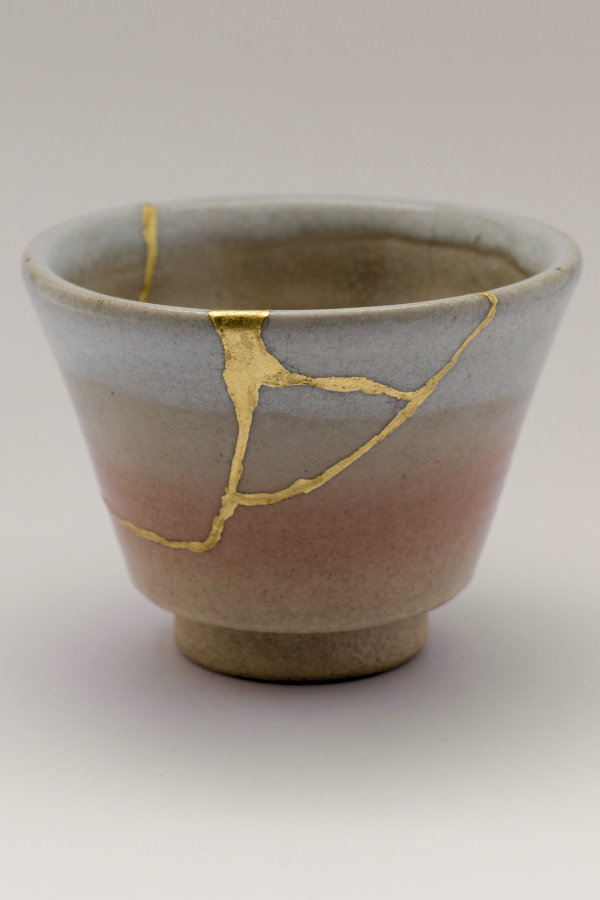
Here’s What to Do About Textured Wallcoverings That Gather Dust
Summary
Textured wallcoverings like grasscloth, raffia, silk, and plaster add warmth, depth, and dimension to interior spaces—but they also collect dust. With smart placement, gentle maintenance, and client education, you can confidently use these materials without sacrificing practicality or long-term beauty.
Reflection Questions
– Are there current or upcoming projects where texture could elevate the mood or material story, even with a bit more upkeep?
– How do you currently talk to clients about the difference between beautiful and low-maintenance materials—and where might that conversation be clearer?
– Could a new material placement strategy help balance your aesthetic goals with your client’s comfort level around maintenance?
Journal Prompt
Reflect on a time you specified a higher-maintenance material in a project—textured wallpaper, unlacquered brass, natural stone. What led you to that decision, and how did you manage expectations around its care? Now, consider a current project. Where might texture play a role in enhancing the space, and how would you guide that choice differently today?
Textured wallcoverings are having a long, well-deserved moment. Whether it’s raffia, grasscloth, raw silk, or a dimensional plaster, these materials bring softness, shadow, and sculptural impact to walls that might otherwise fade into the background.
Designers often turn to texture when a room calls for more than color or pattern alone—especially when the space is fairly monochromatic or neutral. In a living room, it can also absorb sound and add subtle movement. In a hallway or library, it can create depth without needing additional ornamentation. And in more intimate spaces—think bedrooms, dressing rooms, or formal dining areas—it can elevate and ground the space simultaneously.
Texture also signals intent. A room with a textured wallcovering feels curated. It suggests that someone considered how light hits the surface, how sound travels through it, and how it complements the rest of the design story. And clients notice. They may not always be able to name it, but they do feel the difference.
Of course, the trade-off is dust. Fibers, grooves, and raised surfaces naturally collect it—especially in high-traffic areas or homes with pets. That doesn’t mean you have to avoid texture altogether, but it does mean choosing where and how to use it—and making sure your clients know what to expect from the beginning.
Yes, Textured Wallpapers Might Gather Dust, But They’re Worth It

There’s no way around it: textured wallcoverings tend to collect dust. It’s part of their nature. The same fibers, grooves, and raised patterns that create visual interest also give particles a place to land—and stay.
Some materials, like grasscloth and raw silk, are especially prone to this. Their open weave or delicate finish can act almost like a sieve, trapping dust and dander as it moves through the air. Embossed vinyl or plaster finishes can hold less but still highlight buildup over time, especially in areas where sunlight reveals every surface detail.
Placement plays a role, too. Dust tends to settle near the top of walls, in corners, and along edges—especially behind furniture or in rooms with limited airflow. Homes with pets, fireplaces, or HVAC systems running year-round may see faster accumulation.
None of this means texture is off-limits. But it does mean making smart choices about where it’s used—and understanding what kind of upkeep it might require. It also means giving clients the information they need before installation, so they’re prepared rather than surprised.
Should You Talk to Your Clients About It?
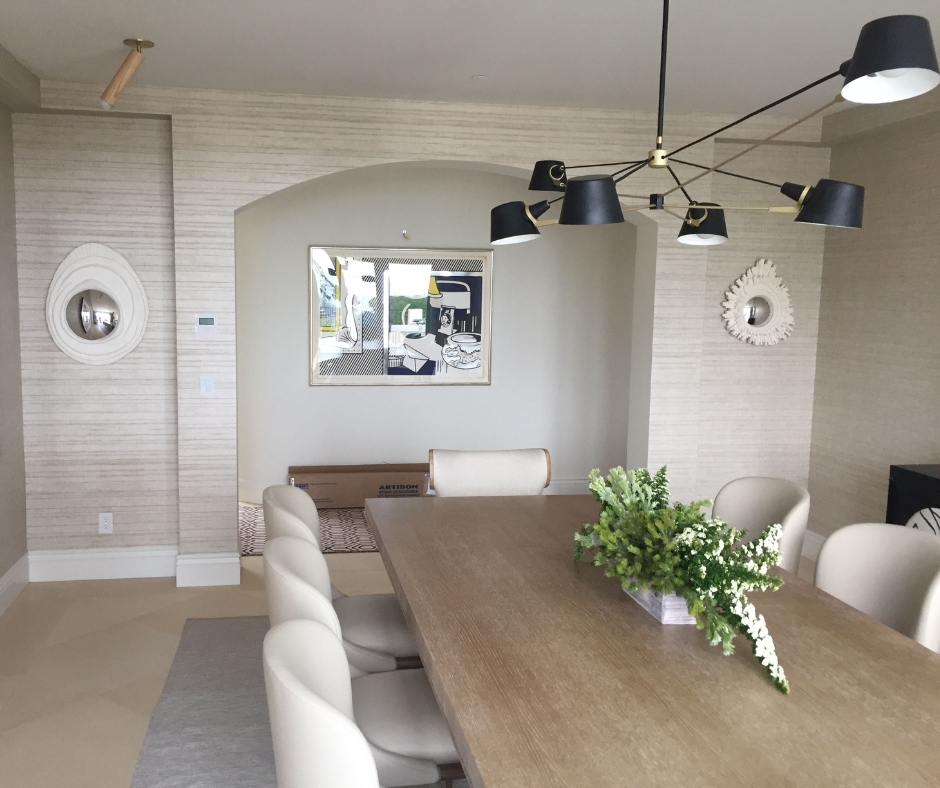
Textured wallcoverings can be a gorgeous design decision—but they’re also a commitment. This is why it’s important to set expectations early—especially when working with clients who are new to these materials or who prioritize low-maintenance living.
Why It Matters
Setting expectations from the start avoids future tension. While most clients are drawn to the tactile richness and visual softness that texture brings, they may not realize that it also means more upkeep. Addressing that upfront ensures the wallcovering remains a thoughtful detail—not a regret.
How to Frame It
It doesn’t need to be a warning—just an honest part of the conversation. A line as simple as the following helps clients understand both the value and the responsibility.
“This wallcovering will bring warmth and movement to the space—but it does require some light, regular upkeep to stay looking its best.”
Offer Alternatives or Strategic Placement
Texture doesn’t have to be everywhere to be effective. Guide clients toward location-specific choices. For example, you might say…
“We might skip this in the entryway or mudroom, but it would be stunning in the dining room, where wear-and-tear is minimal.”
Use It as a Values Check
This can also be a good moment to talk about design priorities. Is your client more invested in visual richness or day-to-day ease? Are they comfortable with a bit of patina—or do they prefer things pristine? Framing it as a values-based decision—elegance vs. effort, uniqueness vs. perfection—can help clients make choices they’ll stand behind long after install day.
How to Keep It Clean (Without Damaging It)
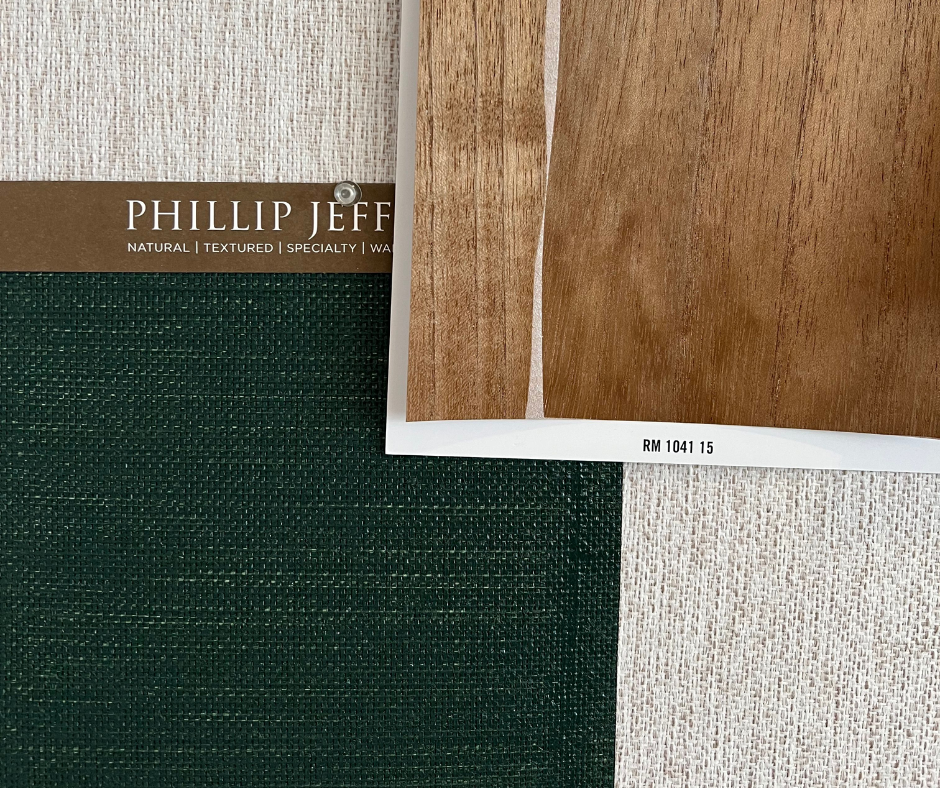
Again, textured wallpaper is beautiful—but it isn’t low-maintenance. The good news is that with the right tools and a light touch, you can keep it in excellent condition for years. Most designers recommend combining frequent light dusting with seasonal deep cleaning tailored to the material.
Start with Regular Dusting
For all types of wallpaper, weekly or biweekly dusting is key. Use a long-handled microfiber duster or a vacuum with a soft brush attachment to gently lift dust without embedding it further. Pay extra attention to corners, baseboards, and the upper perimeter where dust tends to collect.
As Katie Dills, SVP at The Cleaning Authority, told Martha Stewart Living, “Like painted walls, regular dusting with a long-handled microfiber duster is a must.”
Fuel your creative fire & be a part of a supportive community that values how you love to live.
subscribe to our newsletter
*please check your Spam folder for the latest DesignDash Magazine issue immediately after subscription

Focus on Timing and Technique When Deep-Cleaning
How often you deep clean depends on the environment. Brett Grauman of Five Star Painting suggests cleaning every 3–4 months, while others recommend once a year. Homes with pets, HVAC systems, or fireplaces may require more consistent attention.
For washable wallpaper (like vinyl), you can use a solution of warm water and dye-free dish soap applied with a well-wrung sponge. Always wipe in gentle up-and-down strokes and dry immediately with a clean microfiber cloth to avoid lifting seams.
“The wallpaper will lift if you use too much water,” says Dills. “Be extra cautious around the seams and avoid over-wetting the surface.”
— Martha Stewart Living
For non-washable papers—think grasscloth, silk, or heavily textured fabrics—avoid liquids entirely. A soft vacuum brush or a dry cleaning chemical sponge is your best bet. Use long, even strokes and avoid back-and-forth scrubbing. If you’re unsure, test a small area first.
Annissa Coy, writing for R&R Magazine, notes that for textured or fabric wallpaper, a HEPA vacuum followed by a dry chemical sponge is often the safest approach. “Never scrub,” she warns. “Start with the least invasive method first.”
Spot-Cleaning the Smart Way
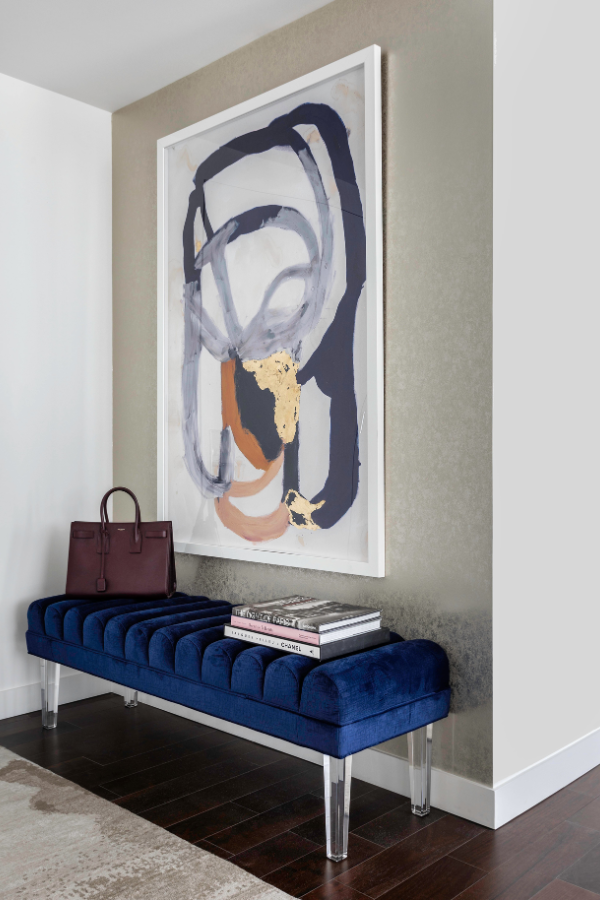
Accidents happen; all of our walls have been subject to scuff marks, grease splatters, the occasional toddler drawing. When they do, gentle spot-cleaning can help—but you must always test first.
For scuffs, use a diluted vinegar solution (½ cup vinegar to 1 quart water) with a damp sponge. For grease, try a paste of water and cornstarch or use dry Borax to lift the stain. And for your child’s latest masterpiece (whether it’s rendered in lipstick or crayon), lightly rub with fine-grade steel wool (no water) or use a dry-cleaning solvent dabbed with a paper towel.
More stain-specific guidance can be found in Steve Leasure’s recommendations for Martha Stewart Living—but again, test before treating. Some wallpapers—especially silk—will not recover from aggressive spot-cleaning.
When to Call in a Professional
If you’re working with a specialty wallcovering—velvet, dark silk, high-end handwoven fibers—consider recommending that your clients bring in a professional cleaner every 6 to 12 months. Some designers even build this into seasonal maintenance checklists for clients.
And when specifying wallpaper for a high-use room (like a hallway, mudroom, or kid’s bedroom), you might opt for materials with protective coatings or even performance-grade faux textures that mimic the look without the vulnerability.
Final Thoughts
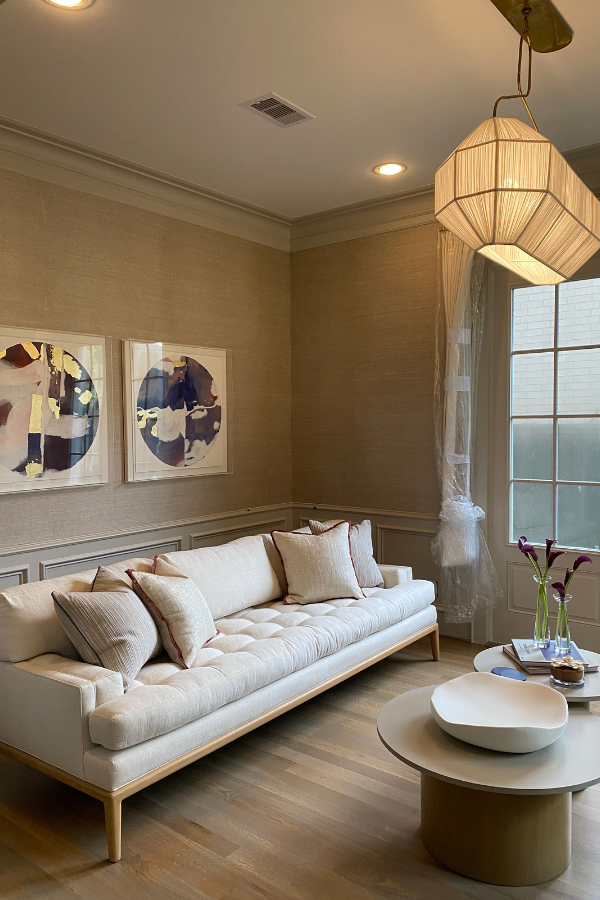
Textured wallcoverings are worth the extra care. They bring depth, warmth, and intention to a room in a way few other finishes can. And while they do gather dust, that shouldn’t be a dealbreaker. It should simply be part of your client conversation.
As designers, we’re tasked not only with choosing beautiful materials but also with helping our clients understand how to live with them. That includes knowing when to suggest a soft brush vacuum over a sponge, when to recommend seasonal cleanings, and when to steer a client toward performance-grade options that offer the look they love with a little less upkeep.
The truth is, no material is completely maintenance-free. But the dimension that textured walls bring to a space often outweighs that extra effort. Dust is manageable. Regret over a missed design opportunity? Much harder to clean up.
Not sure how to talk to clients about these issues? Join the DesignDash Community for support, resources, and answers to all your design business questions.




